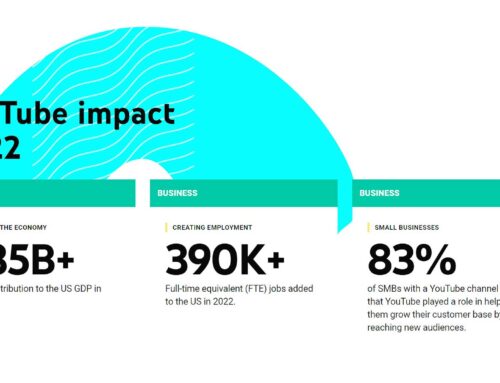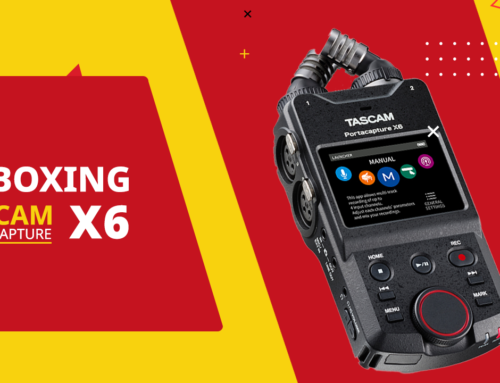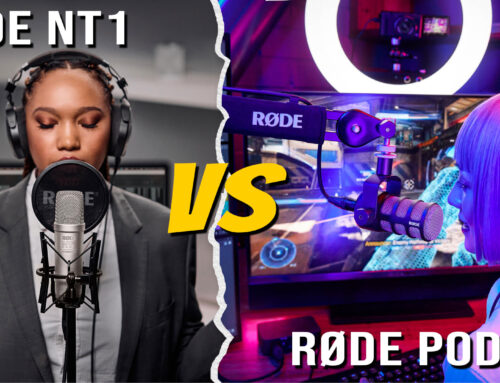Adding a prime lens to your DSLR accessories is an easy way to boost the production value of your video blog in two specific ways that I’ll be talking about in today blog post.
[Transcription]Shooting with a DSLR camera and ready to take your video blogs to the next level? Let’s talk about upgrading to a prime lens. Hi there Internet fans, Ryan Perry. And in today… I want to talk about prime lenses and the two key ways they’re really going to help out your video blogs. Taking them to the next level.
First let’s talk about what a prime lens is. Now, most of you if you buy a kit camera… that is a DSLR, such as the T5, the T6 by Canon, it came with a kit lens. This here is the kit lens that came with my T5. It’s an 18 by 55 and I believe it’s an F4.5. Now, you don’t need to worry about the 18-55, that just talks about how wide the camera can see and how telephoto or how much it can zoom. That’s the 18 the 55. What we’re going to really focus on is that f number. That f/4.5 and that f number is really important because on a prime lens, a prime lens is going to have a much lower f number. This is a 35 mil lens and that means it doesn’t zoom it. It can only see 35 Stick it on your camera, whatever it sees is what it sees. In order to get your shot just right, you either have to move the camera forwards and backwards because you can’t zoom. Or, you need to move your subject. However, with a low aperture value, that f number of… in this case it goes down to f/1.8. What that means is, is that it actually allows more light in. And that’s important for two reasons. Number one is actual lighting. I don’t have a lot of light in this office and that’s OK because on my Canon f50(mm) prime lens that I’m shooting with I’m able to take my f number all the way down to 2. That means it lets a lot of light in, so I don’t have to have big studio lights in order to have a good production value. Now, I do have to but my ISO up to 400 in order to compensate but the quality still comes out really good.
The other thing it does is, I brought in some demo stuff here, because normally I just have my gray wall. And that is, it blurs out the background. And you’ll notice that, well what you don’t notice is that, this is a gray wall this isn’t a backdrop or anything and you don’t see that texture in the wall.
The lower the number the lower or shorter the focal length is of the lens. And, what I mean by that is that as that f number decreases and gets smaller the focal length – how much how much of your picture is in focus from front to back is greatly minimized as that f number increases, f/5, f/10, f/15. It brings everything into focus. So, if you’re doing landscape photography or a video where you want to see everything in focus then you would go with a higher f value such as f10, but it’s going to let… let less light in, so you have to make sure that you have enough light.
On the opposite end as you bring that f number down. Think about portraits. People take pictures of couples outdoors and how you get that blurry background, that dreamy effect. That is that lower f number and that’s why I brought in these props here and you’ll notice that they’re out of focus. What I’m going to do is I’m going to bump the f value up in order to bring the background more in focus so you can get an idea of what I mean.
Through the magic of video editing here I am and I’m still using the same lens. I made a couple of adjustments in the camera though to better reflect what you would see with a kit lens in the same conditions. The same lighting conditions, the same camera. The only thing that’s different is I moved the f value from 2 all the way up to 5.6. And, that’s typically on the low end of this type of camera (lens) is about where you’re going to be. Well, there’s two things you probably noticed. One, I probably look a little grainy and that’s because I have the bump the ISO value of the camera up to 3,200. And, that lets the sensor on the camera let more light in. But when you do that you get a lot of grain, it just doesn’t look good. But, secondly the contents behind me, my props behind me, appear more in focus. And the reason is is that f number, and that’s really where a prime lens is going to give you a much better result on video.
In fact I don’t like the way this looks, let’s switch back. OK, this looks so much better. Now we’re back at f/2, and I’m able to drop the ISO on that camera down to 400. The quality is so much better. I don’t, I’m not blinded by a bunch of studio lights and again I’m able to do that because of the prime lens.
Allright Facebook friends, are you ready to make the switch to a prime lens? Would love to know what you think in the comments below, and by the way. That Canon 50mm lens that I’m using right now, I only paid $125 on B&H. I think personally, it’s a great deal, it is a great way of boosting your production value. If you think so also be sure that give me a thumbs up and share this video with your friends who might find it relevant.




Leave A Comment